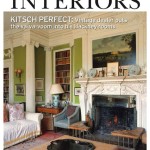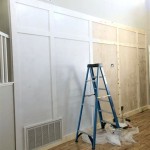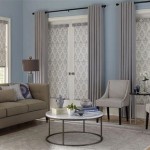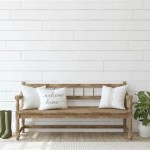What Is Mid-Century Modern Interior Design?
Mid-Century Modern (MCM) interior design is an aesthetic that emerged in the middle of the 20th century, roughly spanning from the 1940s to the 1960s. It represents a significant departure from earlier decorative styles, embracing a distinct set of principles regarding form, function, and materials. Characterized by clean lines, organic shapes, a blend of natural and man-made materials, and an emphasis on practicality, MCM design continues to captivate and influence contemporary interiors.
The post-World War II era was a period of significant social and technological change. Mass production techniques, coupled with a desire for a brighter, more optimistic future, heavily influenced the design landscape. MCM sought to create accessible, functional, and aesthetically pleasing homes that reflected the times. Designers like Charles and Ray Eames, George Nelson, and Eero Saarinen became prominent figures, pioneering innovative furniture and architectural concepts that are still revered today.
MCM is not simply a historical style; it's a set of design principles that can be adapted and integrated into modern homes. Its emphasis on simplicity and functionality resonates with contemporary sensibilities, promoting a living space that is both stylish and livable. Understanding the key characteristics of MCM allows homeowners and designers to effectively incorporate this timeless aesthetic.
Key Point 1: Clean Lines and Minimalist Aesthetics
One of the defining characteristics of Mid-Century Modern design is its emphasis on clean lines and minimalist aesthetics. This principle is evident in furniture design, architectural details, and overall space planning. The goal is to create a sense of openness and unclutteredness, allowing the form and functionality of individual elements to stand out. Ornamentation is typically kept to a minimum, favoring simple geometric shapes and smooth, uninterrupted surfaces.
Furniture pieces often feature sleek silhouettes with tapered legs, avoiding excessive decoration or intricate carvings. Sofas and chairs are commonly low-slung, contributing to a sense of horizontal emphasis within the space. Case goods, such as dressers and sideboards, are characterized by their clean lines and understated hardware. The focus remains on the inherent beauty of the materials and the refined proportions of the design.
In architectural design, this translates to simple rooflines, large windows, and open floor plans. Mid-century homes often prioritize natural light and a connection to the outdoors. Interior walls are minimized to create a sense of spaciousness and flow, allowing for flexible use of the living area. The overall effect is a light, airy, and uncluttered environment that promotes a sense of calm and well-being.
The minimalist approach extends to the selection of accessories and decorative items. While personal touches are encouraged, the emphasis is on quality over quantity. A few carefully chosen pieces, such as a sculptural lamp or a well-designed vase, can add visual interest without overwhelming the space. Avoiding excessive clutter allows the architectural and furniture elements to take center stage, creating a cohesive and harmonious design.
Key Point 2: Organic Shapes and Natural Materials
While MCM design embraces clean lines, it also incorporates organic shapes and natural materials to create a sense of warmth and connection to the environment. This juxtaposition of geometric forms and natural elements is a hallmark of the style, adding depth and visual interest to the overall aesthetic. The use of wood, metal, glass, and upholstery is carefully considered to achieve a harmonious balance between man-made and organic textures.
Wood is a prominent material in MCM design, often used in furniture construction, wall paneling, and flooring. Teak, walnut, and oak are popular choices for their rich tones and distinctive grain patterns. The natural warmth and texture of wood contribute to a sense of comfort and authenticity within the space. Furniture pieces often feature exposed wood frames, highlighting the craftsmanship and natural beauty of the material.
Organic shapes are evident in furniture design, such as the iconic Eames molded plywood chair or the kidney-shaped coffee table. These forms mimic natural contours and add a sense of fluidity to the space. Rounded edges and smooth curves are often preferred over sharp angles, creating a more inviting and approachable atmosphere. The integration of organic shapes softens the overall aesthetic and prevents the design from feeling too stark or sterile.
Natural materials extend beyond wood to include elements like stone, leather, and textiles made from natural fibers. Stone fireplaces or accent walls can add a touch of rustic elegance to the interior. Leather upholstery provides a luxurious and durable surface for seating. Textiles made from wool, cotton, or linen add texture and warmth to the space. The careful selection and integration of natural materials contribute to a sense of authenticity and connection to the natural world.
Key Point 3: Functionality and Practicality
Mid-Century Modern design places a strong emphasis on functionality and practicality. The underlying principle is that design should serve a purpose, providing solutions to everyday needs while remaining aesthetically pleasing. This focus on functionality is evident in the design of furniture, storage solutions, and overall space planning. The goal is to create a living environment that is both beautiful and highly usable.
Furniture pieces are designed with ergonomics and comfort in mind. Chairs and sofas are often low-slung and generously padded, providing a comfortable and inviting seating experience. Tables are designed to be both functional and visually appealing, with ample surface area for everyday use. Storage solutions are integrated seamlessly into the design, providing ample space for organizing belongings without sacrificing style.
Multi-functional furniture is a common feature of MCM interiors. Pieces like sofa beds, expandable tables, and storage ottomans offer versatile solutions for smaller spaces. These items can adapt to different needs and maximize the functionality of the living area. The emphasis on multi-functionality reflects the desire to create efficient and adaptable living spaces.
The emphasis on functionality extends to space planning. Open floor plans are designed to promote a sense of flow and connection between different areas of the home. This allows for flexible use of the space and encourages social interaction. Large windows are incorporated to maximize natural light, reducing the need for artificial lighting and creating a more cheerful and inviting atmosphere. The overall design is carefully considered to create a living environment that is both practical and aesthetically pleasing.
In essence, Mid-Century Modern interior design represents a harmonious blend of form and function, natural and man-made materials, and clean lines with organic shapes. Its enduring appeal lies in its ability to create living spaces that are both stylish and practical, reflecting a design philosophy that prioritizes simplicity, functionality, and a connection to the natural world.

What Is Mid Century Style In Interior Design Inspiration Books Blog

Mid Century Modern Interior Design What Is It And Stunning Examples

Midcentury Modern Style 101

Mid Century Interior Design 7 Tips For Creating A Timeless Modern

History Of Interior Design Mid Century Modern

An Interior Design Expert Explains Why Mid Century Modern Will Never Go Out Of Style

Mid Century Modern Interior Design 6 Features And Stunning Ideas

Discover Mid Century Modern Interior Design Tips Inspiration Nook Find

Interior Design Inspirations How To Get A Mid Century Modern Home

5 Features Of Mid Century Modern Interior Design Windermere Real Estate
Related Posts








